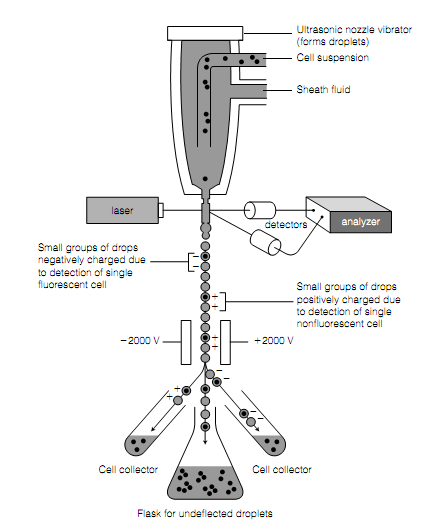Flow cytometry
By measuring the light they scatter, or the fluorescence they emit, Different cells can be identified as they pass a laser beam in a flow cytometer. activated cell sorter or FACS an instrument based on flow cytometry, in a fluorescence cells can be recognizes and separated from each other. The cells of

A fluorescence-activated cell sorter. An antibody specific for a particular cell surface protein is associated to a fluorescent molecule and then added to a mixture of cells. For fluorescence When the specific cells pass through a laser beam they are monitored. Droplets containing single cells are given a positive or negative charge, based on whether the cell has limited the fluorescently-tagged antibody or not. Droplets containing a single cell are then de?ected by an electric field into collection tubes according to their charge.
Interest are first labeled with an antibody which is individual for a particular cell surface molecule. Antibody is coupled to a fluorescent dye, like when in a narrow stream the individual cells pass a laser beam in single file, the fluorescence of each cell is measured. A vibrating nozzle then forms small droplets which each containing a single cell which are given a negative or positive charge based on whether the cell they contain is fluorescing. A strong electric field defects the various charged droplets into separate containers so that each container has a homogeneous population of cells eventually with respect to the cell surface molecule tagged along fluorescent antibody. For biochemical analysis or grown in culture These homogeneous populations may then be used. By flow cytometry The RNA and DNA content of a cell can be measured also.